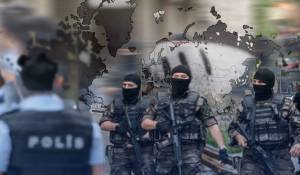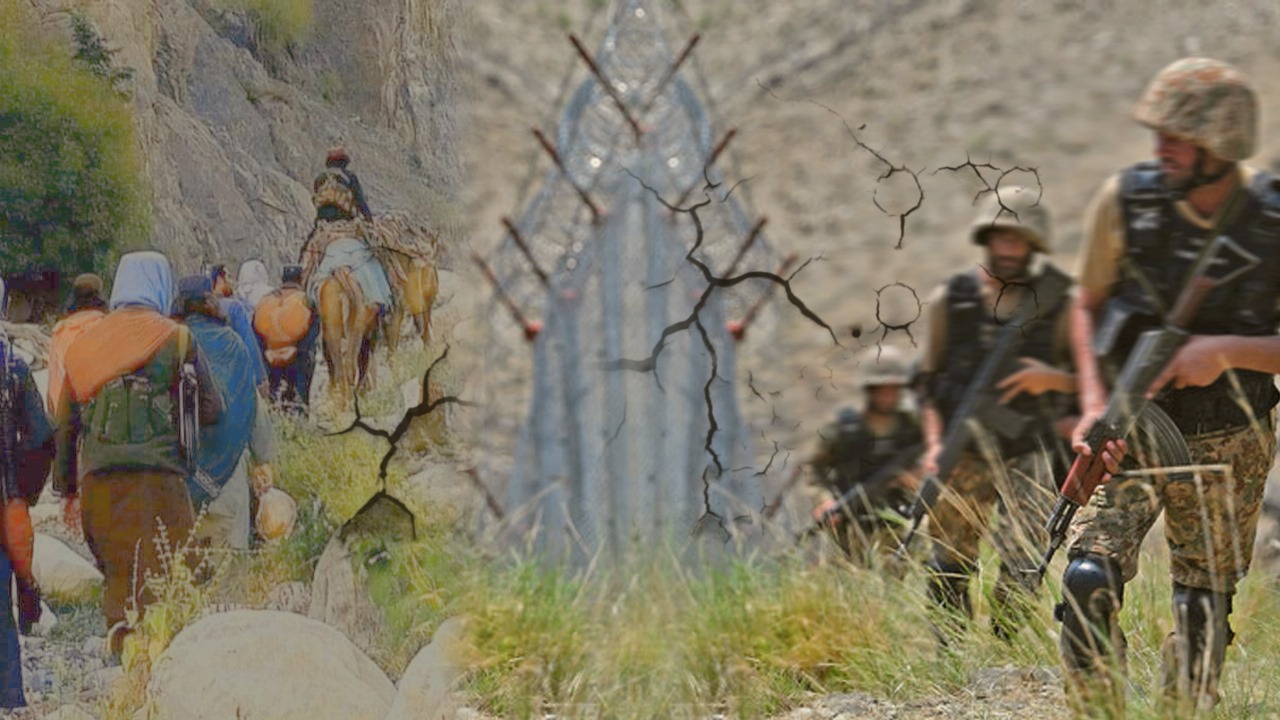
Riccardo Valle

January 10, 2026
By | Riccardo Valle

Since early 2023, the militant landscape in Pakistan has become quite intricate and evolved into a more complex dynamic, including the emergence of new groups; the alignment of different factions; and changes in policies by militant leaders.
Throughout 2023, new names began to surface more frequently, with groups continuing to claim responsibility for several attacks, in addition to the usual ones. ¬
Hence, Tehreek-e-Jihad Pakistan (TJP) and Ansarul Jihad (AuJ) emerged as new and apparently independent organisations. Meanwhile, some of the nearly defunct or dormant organisations also resumed their attacks, even if for a brief time. Such groups include Lashkar-e-Khorasan and Lashkar-e-Islam (LeI). On the other hand, sub-factions of other major organisations such as Jabhat Ansar al-Mahdi Khorasan (JAMK), began to step up attacks and media warfare More significantly, militant organisations adopted a change in their structure and internal policies, occasionally sparking differences among affiliates, as it had been the case with the recent frictions between TTP and Jamaatul Ahrar (JuA), now seemingly resolved.
Hafiz Gul Bahadur Group Militants. (Source: Social Media)
While it is evident that jihadist organisations in Pakistan have been gradually repositioning themselves after the restoration of the Islamic Emirate – whether in collusion, guided, or directly or indirectly influenced by the trajectory of the Afghan Taliban – it is also clear that jihadist organisations in Pakistan are reaching new phases in their evolution, displaying a cunning and patient approach in framing their struggle vis-à-vis Islamabad.
The Tehreek-e-Taliban Pakistan (TTP) is the most vivid example of such transformation, adopting new tactics both in terms of attacks as well as in terms of relations with other jihadist factions; jihadist politics; and media warfare. But while the TTP already started the process in 2018 –when the current leader, Mufti Noor Wali Mehsud, took the reigns over the fragmented umbrella alliance and slowly patched it – recently, another major Pakistani Taliban faction, Hafiz Gul Bahadur group (HGB), has made important changes in its structure and modus operandi.
Hafiz Gul Bahadur New Structure
At the start of 2023, factions affiliated with the HGB started gaining more prominence by claiming both low-intensity and major attacks, particularly in the Bannu district and the North Waziristan district of the Khyber Pakhtunkhwa province. These factions carried names such as Jabhat Ansar al-Mahdi Khorasan (JAMK), Ittehad Mujahideen Khorasan (IMK), Majlis-e-Askari (MA), Jabhat al-Junood al-Mahdi (JJM), Jaish-e-Fursan-e-Muhammad (JFM), and Jaish-e-Omari (JeO).
All these factions operate under the umbrella of the HGB group, which in total counts around 60 to 70 different sub-factions and tashkeel (fighting units). The number of militants belonging to these units might vary; however, they usually comprise between 200-300 men. These sub-factions collaborate closely with each other, often exchanging militants between groups and coordinating joint attacks, although they do not openly acknowledge this cooperation in a formal manner.
On November 26, 2023, JAMK conducted a suicide attack, targeting a military convoy of Pakistan’s Army in the Baka Khel area of the Bannu district. In 2024, JeO claimed the first suicide attack of the year carried out in Pakistan in Mir Ali area of North Waziristan tribal district, while it also claimed another suicide attack on March 16, 2024, which it said was carried out in collaboration with JFM against security forces in Mir Ali area. The latter attack was followed by a ground assault from a team of militants, marking a change in the tactics of the group. The joint attack resulted in the death of at least seven security personnel and the injury of 17 more, making it one of the major attacks claimed by HGB over the last few years.
Hafiz Gul Bahadur Group Militants. (Source: Social Media)
This latest attack also had a domino effect on Afghanistan-Pakistan relations, with a new phase of friction occurring between the two countries. Specifically, on March 18, Pakistan conducted cross-border airstrikes in Paktika and Khost provinces of Afghanistan in retaliation for the JeO-JFM suicide attack. The targets of the attack were TTP and HGB militants in Afghanistan; however, the victims of the bombing were civilians, including the families of militants. In return, Afghanistan’s border troops retaliated by opening fire from several positions on the border into Pakistan’s installations. The outbreak of violence between the two states was the last point of a long trail of accusations moved by Pakistan against Afghanistan, with the former claiming that the majority of suicide attacks conducted in Pakistan in 2023 employed Afghan nationals. On November 26, 2023, after JAMK conducted the suicide attack, Pakistan urged Afghanistan to hand over Hafiz Gul Bahadur, who according to Pakistan, has been residing in the southern part of Afghanistan.
While on the one hand, the intensification of HGB attacks and its sub-factions started to become more prominent, on the other, HGB decided to reform and adopt a gradual shift, mirroring the trajectory of the TTP from a constellation of loosely linked groups to a more robust alliance.
Hence, between February and March, HGB established two new commissions: the Economic Commission and the Reform Commission. The two new organs of HGB were tasked with enacting a series of rules that normalized and sanctioned the behavior of affiliated militants, thus providing a more coordinated modus operandi of the group.
Another organ of the group was also established, the Al-Nusra Department, tasked with coordinating the militant activities in North Waziristan. The announcements were issued by Hafiz Gul Bahadur and the Rahbari Shura, nominating Khalid Haider Khel as head of the Al-Nusra Department, whereas Maulvi Ilham Mada Khel, Commander Zubair Bura Khel, and Commander Jalali Jani Khel were appointed as his area assistants.
Importantly, the message was circulated again – this time in video format – by JAMK media arm, Al-Mansoor Media, on March 20. In a video, JAMK head of the Military Commission, Maulvi Omar Mansoor Haqqani, appeared alongside Commander Jalali Jani Khel. Mansoor Haqqani specifically referred to Jalali Jani Khel as the head of the department of Al-Nusra for the Jani Khel zone and acknowledged Khalid Haider Khel as head of all the zones in North Waziristan. Particularly, Jalali Khel appears to be a dynamic and active commander of HGB, as he is from the ranks of JJM and recently sent several warnings to people in Jani Khel area warning them against playing music. Along with him several other HGB commanders from Jani Khel are seen pledging allegiance to the group.
In the video published by JAMK, Mansoor Haqqani also referred to 12 tasks that under the leadership of Hafiz Gul Bahadur, Khalid Haider Khel, and the members of the Reform Commission, will be enacted by the organization. Some of these rules include individual warnings, such as regarding the shaving of beard, while others set specific guidelines for all factions, such as prohibiting the collection of donations as the Economic Commission will be solely tasked to do that.
The Reform Commission appears to be the main organ tasked with coordinating the efforts for restructuring the organization. In two separate private conversations with a top commander of JAMK and to HGB spokesman, it was confirmed that the Reform Commission is tasked with merging 60-70 sub-factions and tashkeel under one platform.
The 12 new rules outlined by the JAMK video will be actually applied by the Reform Commission. For this reason, the commission is made up of eight members. Headed by Mufti Sadiq Noor, other members are Maulvi Mehbubul Rehman Muntazar; Maulvi Mohsin; Maulvi Sardar Ali Khan; Maulvi Sadiq; Maulvi Siyyed Khan; Maulvi Rahi Khan; and Maulvi Ehsanullah.
According to HGB spokesman, Mufti Sadiq Noor, who is a deputy of Hafiz Gul Bahadur (not to be confused with Mufti Sadiq Noor Masul), is considered one of the most prominent members of HGB, as he is older than Hafiz Gul Bahadur, and is also aiding the Reform Commission.
Furthermore, this reorganizational process also affected individual organisations. At least one confirmed restructuring effort has been underway in possibly the major sub-faction of HGB, JAMK, which is headed by Amir Sadiq. In an interview with a JAMK spokesman, he revealed that JAMK has an internal structure that resembles HGB. Counting five departments both JAMK and HGB have the Al-Nusra Department; the Department for Research and Publication; the Department of War; the Intelligence Agency; and the Central System or Central Shura. These departments are in direct contact with the new commissions set up by HGB in order to bring all movements under the HGB central umbrella.
Hafiz Gul Bahadur Group Militants. (Source: Social Media)
On the other hand, other sub-factions of HGB did not present the same level of elaborate structure. Most of them, even the ones which carried out some of the most devastating attacks in Pakistan, only feature the leading commander, thus being more akin to tashkeel rather than full-fledged groups. All commanders are companions of Hafiz Gul Bahadur; hence, MA is led by Commander Khalil; JeO is led by Commander Ali Dawar; JFM is led by Commander Khalid Waziristani; while Amir Sufiyan is leader of the Sufiyan Karwan, now known also as JJM, with Fikarman being another prominent commander of JJM.
It is important to note that while HGB is mirroring the TTP in the reorganizational process, both are inspired by the Afghan Taliban, Hafiz Gul Bahadur denied meeting the Afghan Taliban supreme leader, Amir al-Momineen Mullah Haibatullah Akhundzada.
It is possible that Hafiz Gul Bahadur is hiding his connection to the Afghan Taliban key leadership; however, it is also probable that given the secrecy of the Afghan Taliban supreme leader, the latter might want to avoid any possibly problematic exposure and repercussions, hence avoiding meeting him. However, a top Commander of JAMK confirmed in a private conversation that the recent talks of a possible merger between different Pakistani Taliban factions have been held under the patronage of the Islamic Emirate.
It is however evident that HGB cannot nor has the will to over-expand the restructuring efforts to the level of the TTP. Hence, an HGB spokesman, in an interview, revealed that HGB will not establish so-called Ministers nor shadow provinces, considering the geographical divisions of North Waziristan and Bannu districts only useful for military tactical reasons.
A New Phase of Militancy
Following the March 16 complex suicide attack staged by JeO and JFM, JeO spokesman, Zarar Dawar, issued a detailed statement announcing that the attack had marked the starting of the Spring Offensive of the HGB platform, stating that North Waziristan tribal district and Bannu district were the battleground for the group.
Together with the increase in the quantity and quality of attacks, HGB is also expanding the number of subgroups part of the outfit. On February 21, a group from Khyber tribal district, headed by Tariq Afridi, pledged allegiance to Hafiz Gul Bahadur. Meanwhile, on March 8, several commanders from Jani Khel, Mamand Khel, Shewa, Aba Khel, Mada Khel, and Razmak areas of North Waziristan also pledged allegiance to Hafiz Gul Bahadur. Remarkably, in October 2023, Commander Ismail Shaheen, head of the Asmatullah Shaheen Bhittani group, pledged allegiance to Hafiz Gul Bahadur. Located in Tank district, the group owes its name to Asmatullah Shaheen, who briefly served as acting Amir of the TTP in 2013 after the death of Hakeemullah Mehsud.
The general reorganization that HGB is witnessing is reminiscent of the TTP one, both in terms of attacks and merging of groups, though on a smaller scale. This is directly linked to the territoriality of HGB, which is entrenched in the North Waziristan and Bannu areas of Pakistan. However, the recent talks of a merger between different factions of Pakistani Taliban, including HGB, reveal the aspiration of the group to step up its struggle, increasing the pressure on security forces and marking its presence on the ground.
Hafiz Gul Bahadur Group Militants. (Source: Social Media)
Hence, it is important to situate HGB's recent trajectory not only in parallel with the TTP ones but also in the current militant landscape in Pakistan. Since August 15, 2021, militant jihadist organisations in Pakistan have undergone significant changes, becoming more sophisticated and ambitious. Surely, this is indebted, directly or indirectly, to the Afghan Taliban and their insurgency and today’s government as a model for other jihadist groups; however, there are strong indicators that Pakistani Taliban are now capable of framing new tactics independently thanks to the knowledge acquired throughout decades of insurgency.
Apart from HGB's connections to Afghan Taliban, its ties to global jihadists are also very much established, given that in the past he provided a base for Al-Qaeda, including its top leadership, in his hometown of North Waziristan tribal district for more than a decade. Additionally, HGB hosted for years the militant faction of the so-called Haqqani Network in the area, which included close relatives and aides of the current Afghan Interim Government (AIG) Interior Minister, Sirajuddin Haqqani.
During HGB leadership, North Waziristan served as a crucial hub for numerous operations carried out during the initial ten years of the Afghan Taliban-led insurgency. This region played a pivotal role in supporting operations in the Eastern Afghan provinces of Khost, Paktika, Paktia, and Nangarhar, and even facilitated major attacks by the Haqqani network against the International Coalition and Afghan republican forces in Kabul. However, with the departure of US-led NATO forces and the subsequent collapse of the Ashraf Ghani government, HGB shifted its focus towards Pakistan, re-directing its struggle aimed at the former republican regime in Afghanistan to the current government’s system in Pakistan.